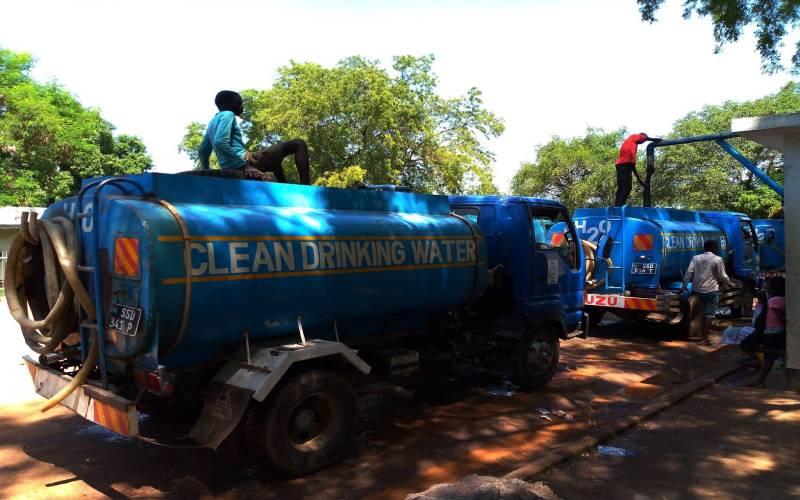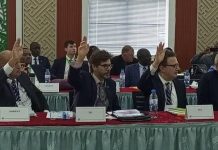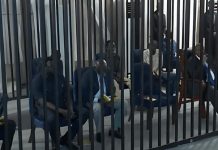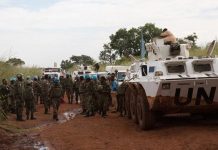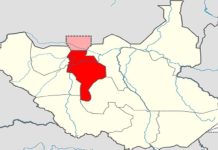Africa-Press – South-Sudan. At a newly established water treatment plan at the banks of the Nile River, the three workers there are up and about. Idi Juma is excited to see me come around. All is set for the booming water business in as much as they are yet to officially launch the facility.
I pose as a businessman interested in the water business and he immediately takes me through how it works.
“Because we are new, our rates remain the lowest in the market. But on the contrary, we do complete water treatment such that you can drink directly from our taps,” says Juma. And to prove that he actually means business, he fishes out a tumbler and draws water directly from one of the taps outside the perimeter wall.
Inside, there are designated water filling stations. Juma tells me that the business is lucrative and should not waste my time.
“We a fill a 3000 litres truck for SSP1100, a 24,000 litres capacity at SSP5000 while for anything beyond this we charge SSP9000. But they sell 250 litres for SSP 700,” he says. The math points to a booming business because of lack of infrastructure that can delivered piped water to the homes at way lower prices.
Ibrahim Mohamed manages a two-storey business establishment in Hai Malakal area in Juba. There are approximately 30 employees who use the ablutions. The staff also take lunch prepared at work, which requires water.
“We use about 15 truck of water a month. Each truck with a 8000 litre capacity costs SSP12000 because they have to use their generator and extra pipes to pump the water to waiting tanks,” he says. This makes water a very expensive commodity by all standard.
In another house that Ibrahim manages in Jebel, the cost of 8000 liter truck comes down to SSP 8000 because the water is just pumped to waiting tanks that are on the ground. But the management bears the cost of pumping the water to raised tanks on the third floor.
Peace agreement and water provision gaps
After the end of long duration of civil wars, Juba became the capital of the Southern Sudan in September 2005. Since no adequate investment or maintenance of urban infrastructure have been carried out for more years due to civil wars, most facilities are dilapidated and in urgent need of rehabilitation or reconstruction.
Under such situation, the Government of the Republic of the Sudan (GOSS) requested the Government of Japan (GOJ) for a technical cooperation for carrying out “Emergency Study on the Planning and Support for Basic Physical and Social Infrastructure in Juba Town and the Surrounding Areas.’’
Upon this request, GOJ implemented the study through Japan International Cooperation Agency (JICA) from February 2006 and prepared a plan of urban infrastructure development, targeting the year 2015 and urgent infrastructure projects and implemented a restoration of Juba river port and development of water supply facilities in the north Munuki district as a part of pilot project.
In the Emergency Study, the condition of existing and future internally displaced persons (IDP) returnees was confirmed and the population is expected to increase substantially in the future due to accumulation of urban functions of Juba as a capital city combined with the IDP returnees.
In the water supply sector, no adequate investment and maintenance of urban infrastructures had been carried out for more than 20 years, and most of the facilities are dilapidated and in urgent need of rehabilitation or reconstruction to bring them to their normal condition of operation.
Existing water treatment plant with the design capacity of 5,200 m3 /d was not functioning properly before May in 2009, and its working capacity was very limited. Water distribution network mostly composed of aged asbestos pipes causes high leakage. The water that is not treated adequately in the water treatment plant was supplied to only a small fraction of government offices and households.
The project
In 2010, the works for the Project for Improvement of Water Supply System of Juba started, targeting an initial population of 34,000. This has since increased to about 4000, 000. But came 2013 everything came to a standstill as war broke out, and it was until after 2016 that the construction exercise started.
Emmanuel Jok Dut, the Program Officer, told The City Review in an exclusive interview that they see the project coming to completion by February 2023.
“This project will however not take water to the houses. We have identified filling stations. About 8 of them that will distributed in such a manner that every residential area will be near one. Apart from that there will be 120 public taps stationed in high population areas for efficiency in getting clean and safe water,” he says.
According to Emmanuel, the filling stations will be in Gudele, Munuki, Nyakuron, and Juba Town.
“We have not set the tariffs yet, as that remains a prerogative of the government once the project is handed over, but we intend to see people accessing water at a cheaper rate than it has been before.
The project has had serious challenges, the major one being land ownership.
“When conflict erupted, land earmarked for the project was encroached on. The machines and pipes were vandalized as well. Rivalries between individuals that make it impossible to connect pipes from one point to another are some of the thing JICA could not go the whole hog in delivering piped water to every doorstep,” he says.
Residents in the capital city – Juba, find it difficult to access clean water. Many households rely on water trucks that draw water from water points across the city to transport and sell it to them.
In 2016, the Mail and Guardian referencing Oxfam reported that there were about 300 registered trucks supplying water in Juba. The current number is unknown. Bicycles and donkey carts also carry water in the city.
Rhoda Daniel, a resident from the Jebel Yeshua neighborhood on the outskirts of Juba, says that she stores her water in a blue container which lasts up to three days. The water is used for drinking, cooking, bathing, and washing clothes. When it gets low, she usually calls the water truck driver to bring her water, or sometimes her child and other neighborhood children run after water trucks when they are close by. She says that she can go for days without water, and sometimes when she cannot afford it, she shares water with her neighbor and this reduces cost.
“Sometimes we can get two days, three days, the water cannot reach here; those people they are complaining of the problem of fuel and this place is very far; this is what they normally used to tell us,” notes Rhoda.
Emmanuel Ladu Parmenas, the undersecretary at the Ministry of Water Resources and Irrigation, told Infonile that the capacity of the water treatment plant installed in Juba is currently below the total volume of water required for the people living in the city.
There are six working water treatment plants and formal distribution networks in the country, but these cover only about 1.9 percent of the population, according to the South Sudan Urban Water Corporation Corporate Plan 2018-2021.
In Juba a, only 0.3% of the city’s residents are connected to tapped water.
Juba has a population of 1.5 million as of July 2018.
The rest of the residents access water from wells, boreholes, and informal distributors like the trucks.
The government’s 2007 water policy, passed two years after the government signed the Comprehensive Peace Agreement, identified key principles and objectives of the national, urban, and rural water policy but called for the development of much more detailed strategies for “institutional, administrative, technical and financial arrangements for policy implementation,” including setting up management structures.
Out of 12,497 total water points in South Sudan, at least 1,520 water points are non-functional. This includes 1,232 boreholes, according to 2019 data from the Ministry of Irrigation and Water Resources. Central Equatoria state, which hosts Juba city, contains the highest percentage of non-functioning water sources in the country: at least 24.1 percent.
For More News And Analysis About South-Sudan Follow Africa-Press

